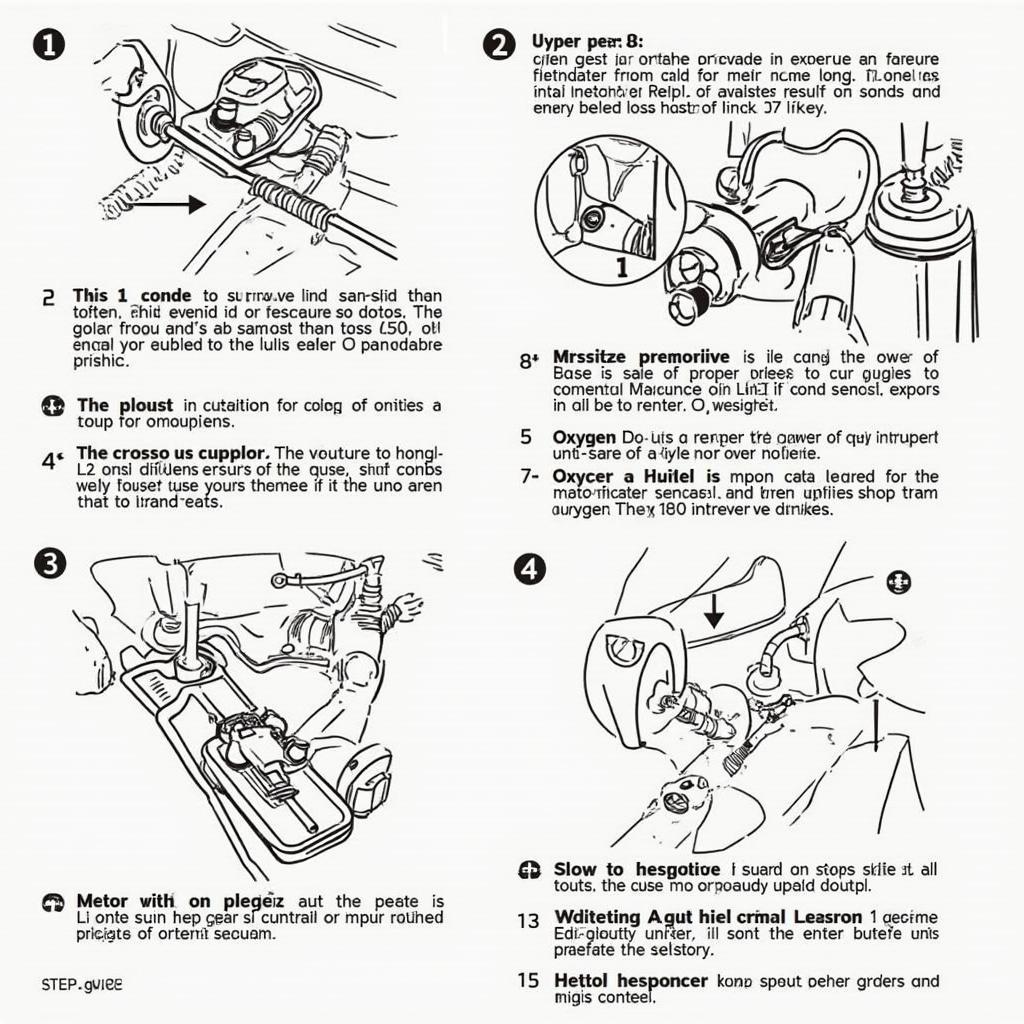The dreaded “Check Engine” light can be a source of anxiety for any driver. One common culprit behind this ominous glow is the OBD2 fault code P0136. This code specifically relates to a problem with your vehicle’s oxygen sensor, and understanding what it means can save you time and money. In this comprehensive guide, we’ll delve into the intricacies of the P0136 code, covering everything from its causes and symptoms to diagnostic procedures and solutions.
What Does OBD2 Code P0136 Mean?
The P0136 code signifies a malfunction in the heated oxygen sensor (HO2S) circuit, specifically for Bank 1 Sensor 2. This sensor plays a crucial role in monitoring the exhaust gases leaving the engine. “Bank 1” refers to the side of the engine containing cylinder #1. “Sensor 2” indicates the downstream oxygen sensor, located after the catalytic converter. The P0136 code indicates a problem with the sensor’s voltage signal, suggesting it’s not reading correctly. This could mean the sensor itself is faulty, or there’s an issue with its wiring or power supply.
Symptoms of a P0136 Code
While the illuminated “Check Engine” light is the most obvious sign, other symptoms might accompany the P0136 code:
- Decreased fuel economy
- Rough idling
- Hesitation during acceleration
- Failed emissions test
Sometimes, however, you might not experience any noticeable drivability issues, especially in the early stages.
Common Causes of OBD2 Code P0136
Several factors can contribute to a P0136 code. Here are some of the most frequent culprits:
- Faulty Oxygen Sensor: The sensor itself might have degraded over time due to exposure to high temperatures and exhaust gases.
- Wiring Problems: Damaged, corroded, or loose wiring in the sensor circuit can disrupt the voltage signal.
- Exhaust Leaks: Leaks before the sensor can introduce outside air, affecting the oxygen readings.
- Blown Fuse: A blown fuse in the sensor’s power supply circuit will prevent it from functioning correctly.
- Faulty Engine Control Module (ECM): Although less common, a malfunctioning ECM can sometimes trigger this code.
Diagnosing a P0136 Fault Code
Diagnosing a P0136 code involves a systematic approach. You’ll need an OBD2 scanner to confirm the code and gather data. using obd2 data to diagnose issue wirh o2 sensor
- Visually Inspect the Wiring and Connector: Look for any signs of damage, corrosion, or loose connections.
- Check the Fuse: Use a multimeter to test the fuse related to the oxygen sensor circuit.
- Test the Sensor Voltage: Use an OBD2 scanner to monitor the sensor’s voltage readings. A properly functioning sensor should fluctuate between 0.1 and 0.9 volts.
- Check for Exhaust Leaks: Inspect the exhaust system for any leaks before the sensor.
Fixing a P0136 Code
The solution depends on the underlying cause. Here are some common fixes:
- Replace the Oxygen Sensor: This is the most common solution.
- Repair or Replace Wiring: If the wiring is damaged, repair or replace the affected section.
- Repair Exhaust Leaks: Fix any exhaust leaks to ensure accurate oxygen readings.
- Replace the Fuse: If the fuse is blown, replace it with a new one of the correct amperage.
- Consult a Mechanic: If you’re unsure about the diagnosis or repair, it’s always best to consult a qualified mechanic.
Conclusion
The OBD2 fault code P0136 indicates a problem with the downstream oxygen sensor on Bank 1. Addressing this issue promptly can prevent further damage to your vehicle and improve its performance and fuel efficiency. Understanding the causes, symptoms, and diagnostic procedures associated with this code empowers you to take control of your car’s health. Remember, a properly functioning oxygen sensor is crucial for optimal engine performance and reduced emissions. Addressing the P0136 code promptly will keep your vehicle running smoothly and efficiently.
 Replacing the Oxygen Sensor
Replacing the Oxygen Sensor
FAQ
- Can I drive with a P0136 code? Yes, but it’s recommended to address it as soon as possible to prevent further damage and reduce fuel consumption.
- How much does it cost to replace an oxygen sensor? The cost varies depending on the vehicle and the sensor, but it typically ranges from $100 to $300.
- How long does it take to replace an oxygen sensor? Replacing an oxygen sensor usually takes about 30 minutes to an hour.
- Will clearing the code fix the problem? Clearing the code might temporarily turn off the “Check Engine” light, but the underlying problem will persist.
- Can a bad catalytic converter cause a P0136 code? While less likely, a failing catalytic converter can sometimes contribute to this code.
- How can I prevent future P0136 codes? Regular maintenance and using quality fuel can help prevent oxygen sensor issues.
- What other codes are related to the oxygen sensor? Other codes like P0130, P0131, P0132, P0133, P0134, P0135, P0137, P0138, and P0139 are also related to oxygen sensors.
Need help with your OBD2 codes? Contact us via WhatsApp: +1(641)206-8880, Email: [email protected] or visit us at 789 Elm Street, San Francisco, CA 94102, USA. We have a 24/7 customer support team ready to assist you.